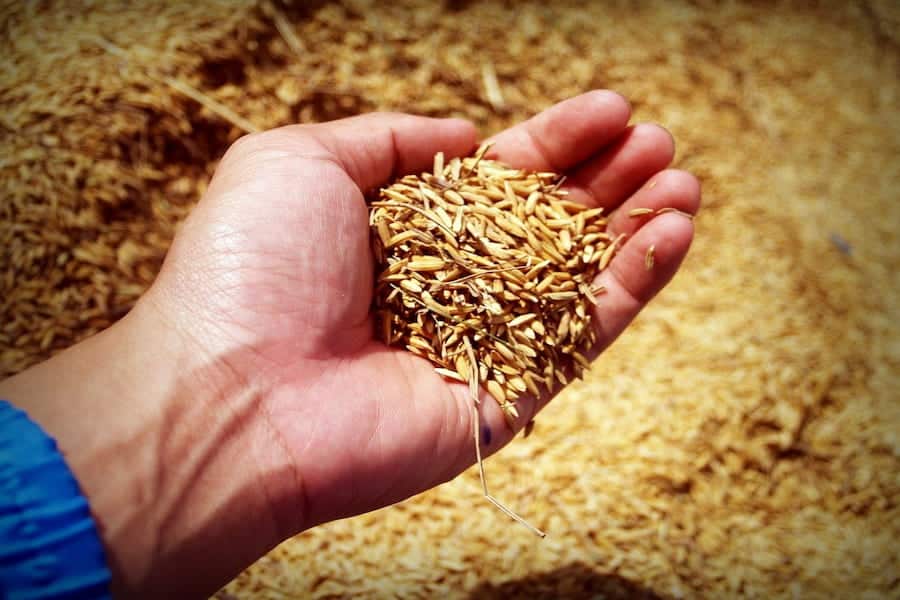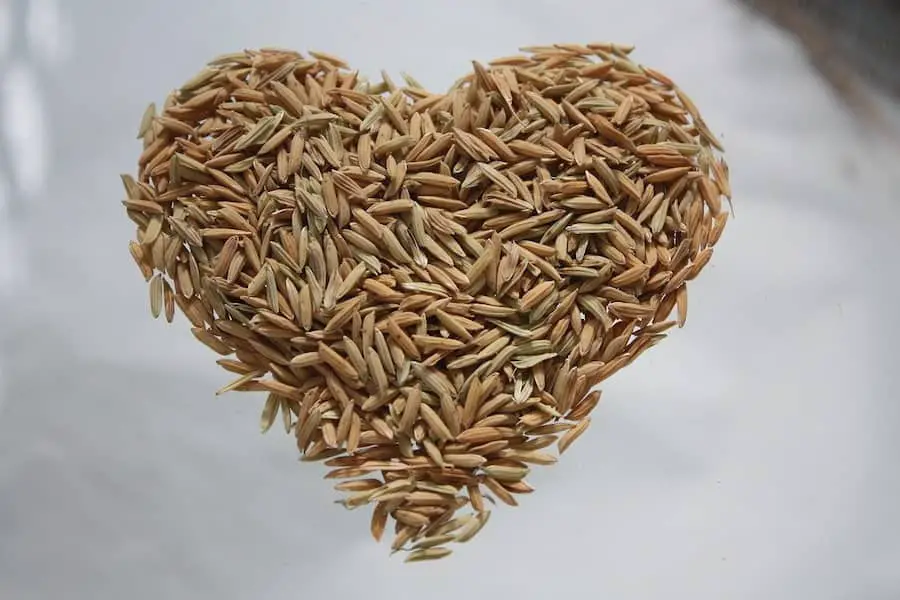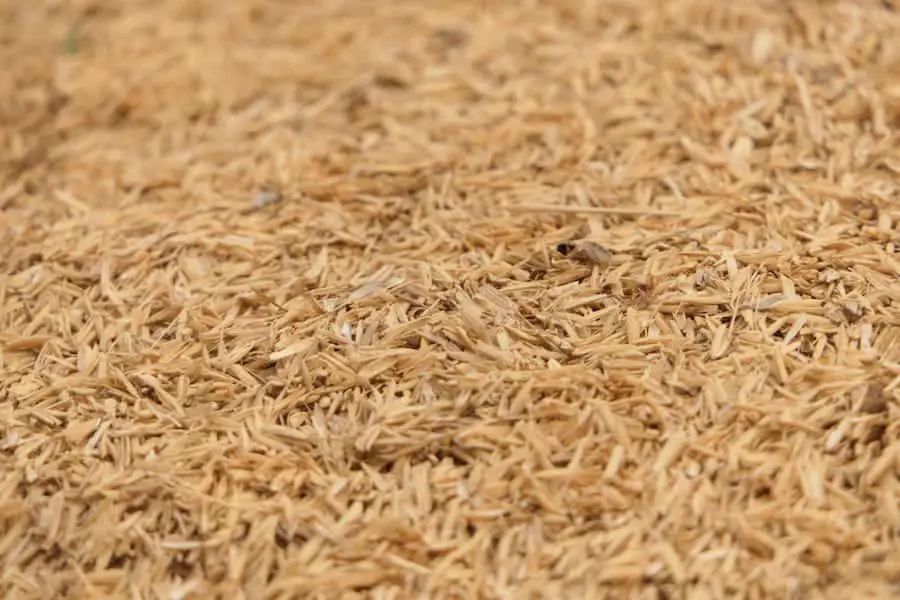If you buy something through a link in our posts, we may get a small share of the sale.
If your mash gets stuck, you need to add rice hulls every time you are brewing. Despite being a waste after harvesting rice, rice hulls are essential ingredients when brewing all-grain beer. However, most homebrewers have no idea how many rice hulls to use in their brews.
Contents
How Much Rice Hulls to Add to Mash
On average, you should add rice hulls, enough to prevent the mash from getting stuck significantly. Typically, the hulls should contribute to 10 to 15% of the dry grains used in the mash to provide enough circulation and infiltration.
However, there are two ways of determining the actual amount of hulls you add to homebrew through calculations. To figure out exactly the right amount of ingredients to use, measure the volume or weight using an accurate measuring device, like a scale.
To gain more knowledge, you can also read the best books for homebrewing.

Method 1
- 1.25 Pounds of Naked Pale Rice Malt
- 1.25 Pounds of Naked Biscuit Rice Malt
- 1 Pound of Amber Rice Malt
- 9.6 Ounces Crystal Rice Malt
Considering this grain bill written for a one-gallon batch, I narrow it down to the Crystal Rice Malts and Amber rice malts since the naked malts contain no hulls.
- 1 Pound Amber Rice Malt – 37.5% = 6 Ounces
- 9.6 Ounces Crystal Rice Malt – 37.5% = 3.6 Ounces
This implies that the above total grain bill has rice hulls of 9.6 Ounces. For proper circulation and infiltration, at least rice hulls of 5.6 Ounces are required in a 3.5 Pounds grain bill.
Method 2
The other method is writing the grain bill presuming that all a hull-less rice malt is used in the brew and then adding the rice hulls in the specialty malts that contain hulls.
- 1.25 Pounds Naked Pale Rice Malt
- 1.25 Pounds Naked Biscuit Rice Malt
- 10 Ounces Amber Rice Malt
- 6 Ounces Crystal Rice Malt
Again, I am left with the Amber and Crystal rice malts.
- 10 Ounces Amber Rice Malt X 60% = 6 Ounces
- 6 Ounces Crystal Rice Malt X 60% = 3.6 Ounces
The two calculations work out the same, but the last grain bill is preferred as it efficiently calculates the hull-less malt for any particular brewing recipe. However, even though a grain bill is a bit heavy on non-rice malts, the rice malt in the recipe above provides most of the required rice hulls.
Which Is the Best Percentage to Use, 10 or 15?
Typically, when 10% of rice hulls are used to brew high percentages of naked rice malts, the mash ends up stuck chiefly. If keen, you will notice that you get half-cooked rice bits when you mash using milled rice malt, unlike when using buckwheat and millet, which release soft powdery starches into the hull.
For this reason, you should use 15% rice hulls when using a grain bill of high percentage naked rice malt to brew for good circulation and filtration. Hulled rice malt beers usually do not result in stuck mashes since they have 37.5% rice hulls, which occur naturally.
So, when brewing using rice malt, you can use 10% of rice hulls if the rice malt is less than a quarter of the grain bill. If the rice malt exceeds a quarter, you can use up to 15% rice hulls.

What are the Disasters of Failing to Use Rice Hulls?
Sparging without rice hulls is dangerous to your brew. It might involve the following disasters.
Inefficient or Stuck Sparge
Eventually, water will make it through the lauter in tiny amounts, thus, forming rivulets and fissures. If this fails, a lot of the sugar is left behind in the conversion process. However, you can prevent a stuck mash or stuck sparge through stirring.
Stirring will also render vorlauf unnecessary while assuring many proteins in the brewing kettle. The problem with stirring the stuck mash is it will still get stuck again after some time. With stuck mash the most sensible thing to do is use rice hulls every time you are brewing heavily adjunct beer.
Impossible Wheat Mash Vorlauf
Since wheat malt has already been dehusked, you are left with nothing but a light shell with a crunchy endosperm interior which converts to mush after mashing. The mush is then filtered back through the lauter in the process of recirculation or vorlauf.
However, if a lower percentage of rice hulls was used, i.e., less than 10%, the wheat grants a much wide pasty film top, making the cloudy wort impossible to pass through the stuck mash. In this case, even stirring or trying to cut across the top is not practical.

Frequently Asked Questions
Does the Rice Hulls Affect the Flavor of the Beer?
No, rice hulls do not affect the taste of the finished beer but instead aid in the lautering process. However, their usage depends on the type of finished beer you intend to make and the geometry of your mash tun.
Do the Rice Hulls Absorb Water?
Rice hulls absorb water from 5% to 16% of the unit weight. Ash from the hulls has almost 90% silica, which is lightweight and porous with a high surface area through the mash bed. Consider soaking your rice hulls in water before mashing them in the mash tun to minimize their possibility of absorbing water.
What is the Best Alternative for Rice Hulls?
You can use oat hulls or oat grain shells. Oat hulls are good filters despite being inedible, and just like rice hulls or barley grains, they do not add or remove anything to the wort. Primarily, they are used when brewing wheat beers or rye, just like rice hulls.
Conclusion
I’ve seen that a suitable rice hulls percentage to add to the mash should be 10 to 15% of the total grain bill, which is roughly 1 pound to 1.5 pounds for a 5-gallon batch. This information about the grail bill and rice malt will help you prevent a stuck mash.

